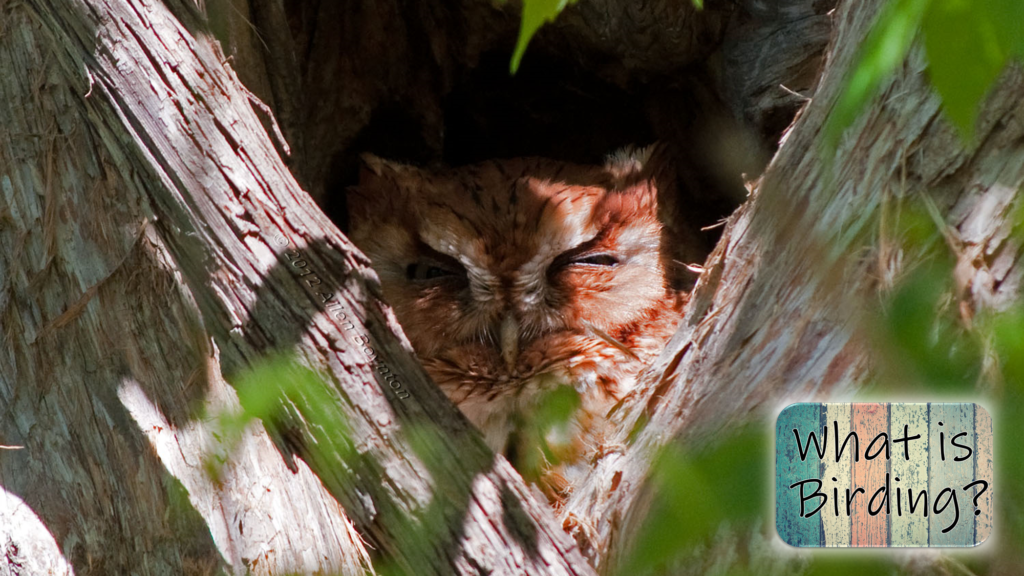
Whether you’re looking for the perfect time to go on your first birding adventure or you’re wondering if there’s an ultimate time-window for maximum bird sightings, “when” is a great question.
The birding experience changes based on several time factors. Depending on when you go, you’ll see completely different species, each at different densities. This is good news—especially for bird enthusiasts that like novelty—because it means you can bird all year long at many different times of day and never get bored.
Consider the Big Year (a commitment some birders make to list all the species they see in a given year). In order to see all of North Carolina’s 460 plus bird species, you’d need to bird all year. And you’d need to bird during both day and night to catch the full spectrum of species.
But the best way to answer any specific “when” questions is to let you in on the different experiences you might get depending on when you bird.
Do you have a memory where the bird sounds were so plentiful, they seemed indistinguishable from each other? What about times where the sounds were loudest and proudest? I’ll bet that memory is one from an early morning.
Many avid birders recommend birding at dawn or just after sunrise for this reason. Birds are very active in the early hours because this is their primary time for feeding. This means if you are itching to witness a high bird-density or many active birds, early morning is the time to try. You’ll see and hear their bustling activity during these hours, then you’ll notice them wind down in the afternoon.
But dawn isn’t your only option. Even though they relax as the day goes on, many birds can still be spotted flitting around throughout late morning and early afternoon. At any point of the day if you’re outside, you’ll probably notice a few birds calling or passing by. This is evidence that even if you decide to sleep in, you can still catch birds during mid-day.
Then there’s night birding. This is when your chance is highest of witnessing nocturnal birds like owls and nightjars. With these fascinating birds making their rounds past sundown, it’s clear that noteworthy birding experiences can be had by us night owls too—pun intended.
And so, birding can be done 24 hours a day! Early morning will certainly give you the most high-density birding experience, but any time of day is, well, “birdable.”
Avid birders flock—again, pun intended—to migration times. In North Carolina, March and September are the months where migration seasons are really starting to kick in. This is a delightful time to bird. You can interact with species you haven’t spotted in months. And you get to witness the wonder of migration. You can see jaw-dropping flocks of Purple Martins traveling in groups of hundreds of thousands. You can catch the first few Bobolinks—a rare enough bird as it is—as they trickle back into the state. You can once again set out your feeders, brew some nectar, and wait for the beloved Ruby-Throated Hummingbirds to return to your backyard.
Nesting season is another look into nature that’s a joy to see. Typically, North Carolina’s “nesting season” begins in March (this is when most birds are nesting) but you can witness the wonders of this season throughout the summer from early nesting birds to late nesting birds and from couples courting to fledglings growing.
Although lots of excitement occurs in these special seasons, birds are still active throughout the year. We also have many year-round residents as well as species that travel from farther north to take advantage of our warmer winters. This means you can witness birds year round. Just like you are not limited to early morning, you are not limited to spring and fall. These seasons will be when the number of active birds is highest, but plenty of birds are out and about throughout the year. This provides a nice incentive to not wait for the next equinox to get out there.
Well, take your pick of the myriad of options.
Bird however you want. You can choose to seek a high-density of birds or to get out at your leisure and simply spot what you find. You can watch the ebb and flow of species as the seasons go on and as migrants make their way back to their southern hemisphere homes and their wintering grounds. You can pop outside right now even, summer or winter, night or day.
So “when” in doubt, I’d say just step outside. Do you hear or see a bird? If you do, now works perfectly.